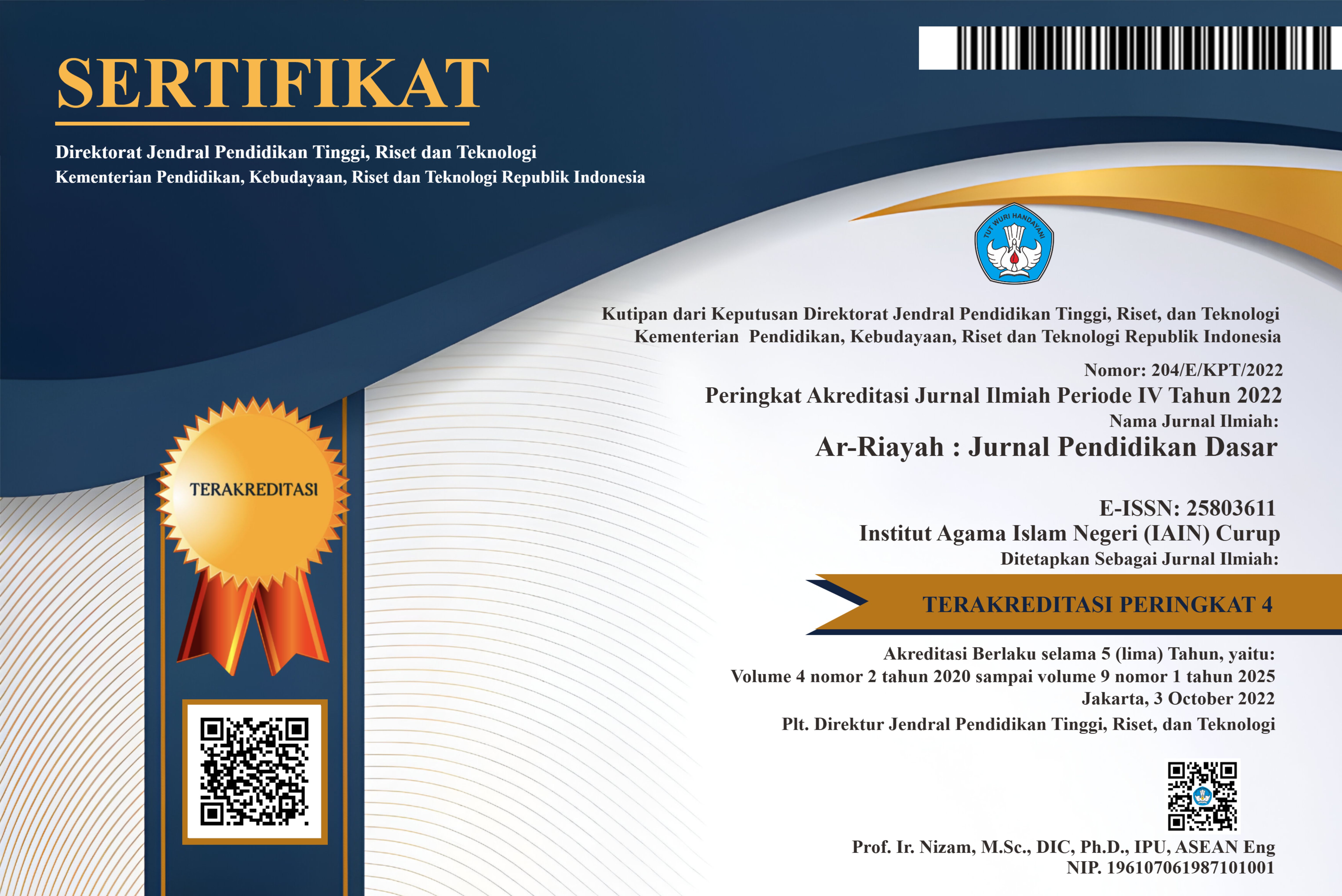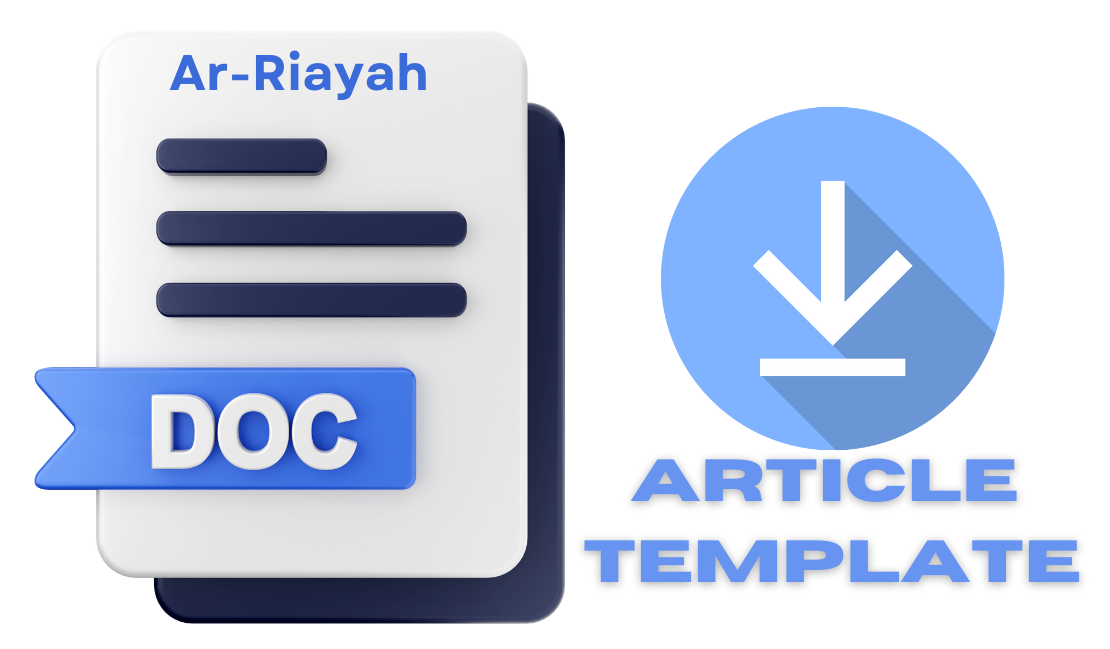Pengembangan Media Pembelajaran Sembia Sosis Berbasis Android Untuk Siswa Sekolah Dasar
DOI:
https://doi.org/10.29240/jpd.v6i1.4024Keywords:
Android Application, Interactive Learning Media, Elementary SchoolAbstract
The purpose of this research is to produce an android-based learning media that can be used by sixth-grade elementary school (SD) students with the content of science subjects on theme 9 with material on the solar system. The background of this research is the boredom of students in implementing Distance Learning (PJJ) so that it requires interesting learning media that can be used anytime and anywhere offline. This research is a development research (R&D) using the ADDIE model procedure. Analysis of the data used is quantitative data analysis. The validation used is media and material validation carried out by experts in their fields. The respondents who were involved in testing the feasibility of the media included class VI teachers, and 20 elementary school students in class VI. The results of this study indicate that the Sembia Sosis (Happy Easy Learning Natural Sciences material for Solar Systems) application which was developed has the characteristics of a file in the form of an application package (apk) that can be installed and run using android that supports students to study independently. Based on the results of expert validation and respondents, overall it was concluded that the Sembia Sosis application suitable for use as a learning medium.
Downloads
References
Bilfaqih, Yusuf, and M. Nur Qomarudin. Esensi Pengembangan Pembelajaran Daring. 1st ed. Yogyakarta: Deepublish, 2015.
Branch, Robert Maribe. Instructional Design. Teaching High School Physics. New York: Springer Science Business Media, 2009. https://doi.org/10.1007/978-0-387-09506-6.
Danial, Haris, and Ismiyati Ano. Bumi Kita Dalam Tata Surya. Jakarta: Kementerian Pendidikan dan Kebudayaan, 2020.
Firmansyah, Willis, Widyasari, Resti Yektyastuty, and Teguh Prasetyo. Teori Belajar Dan Pembelajaran. Bogor: Unida Press, 2017.
Indonesia, Kementerian Pendidikan dan Kebudayaan. Omor 119 Tahun 2014 Tentang Penyelenggaraan Pendidikan Jarak Jauh Jenjang Pendidikan Dasar Dan Menengah. Jakarta: Kemdikbud, 2014.
Karitas, Diana, Arif Subekti, Heni Kusumawati, and Fransisca Susilowati. Menjelajah Angkasa Luar Buku Tematik Terpadu Kurikulum 2013. 2 (Revisi. Jakarta: Kementerian Pendidikan dan Kebudayaan, 2018.
Kemendikbud. “Peraturan Menteri Pendidikan Dan Kebudayaan Republik Indonesia Nomor 119 Tahun 2014 Tentang Penyelenggaraan Pendidikan Jarak Jauh Jenjang Pendidikan Dasar Dan Menengah.†Kementerian Pendidikan Dan Kebudayaan Republik Indonesia, 2014.
Kementerian Pendidikan Dan Kebudayaan. “Pedoman Penyelenggaraan Belajar Dari Rumah Dalam Masa Darurat Penyebaran Corona Virus Disease (Covid-19).†Surat Edaran Nomor 15 Tahun 2O2O, no. 021 (2020): 1–20.
Kumala, Farida Nur. Pembelajaran IPA SD. Journal of Chemical Information and Modeling. 1st ed. Vol. 8. Malang: Ediide Infografika, 2016.
Kusumawardhana, AP Massri M. “Pengembangan Media Pembelajaran Dengan Aplikasi Adobe Flash Cs4 Profesional Berbentuk Game Pendidikan Ular Tangga Pintar Untuk Mata Pelajaran Pengantar Akuntansi Dan Keuangan Kelas Xi Smkn 2 Purworejo Tahun Ajaran 2014/2015.†Universitas Negeri Yogyakarya, 2014.
Li, Sandy C, Jacky W Pow, Emily M Wong, and Alex C. Fung. “Empowering Student Learning through Tablet PCs: A Case Study.†Kluwer Academic Publishers, 2010, 171–80.
Mulyatiningsih, Endang. Riset Terapan Bidang Pendidikan & Teknik. I. Yogyakarta: UNY Press, 2011.
Ramadhani, Mawar. “Efektivitas Penggunaan Media Pembelajaran E-Learning Berbasis Web Pada Pelajaran Teknologi Informasi Dan Komunikasi Terhadap Hasil Belajar Siswa Kelas X SMAN 1 Kalasan.†UNIVERSITAS NEGERI YOGYAKARTA, 2012.
Rigianti, Henry Aditia. “Kendala Pembelajaran Daring Guru Sekolah Dasar Di Kabupaten Banjarnegara.†Elementary School 7, 2020, 298.
Sari, Septiana Dwi Puspita. “Manfaat Media Pembelajaran Berbasis Ict (Information And Communication Technology) Dalam Pembelajaranbahasa Indonesia.†In Prosiding Workshop Nasional, 118. Surakarta: Universitas Negeri Sebelas Maret, 2015.
Suryani, Nunuk. “Pengembangan Media Pembelajaran Berbasis IT.†In Prosiding Workshop Nasional, 1. Surakarta: Universitas Negeri Sebelas Maret, 2015.
Ulfa, EllistyaHayati. “Pengembangan Media Pembelajaran Interaktif Berbasis Android Pada Pembelajaran Tematik Kelas IV SD.†UIN Raden Intan, 2020.
Widoyoko, S. Eko Putro. Teknik Penyusunan Istrumen Penelitian. Yogyakarta: Pustaka Pelajar, 2016.
Downloads
Published
How to Cite
Issue
Section
Citation Check
License
Authors who publish with Ar-Riayah: Jurnal Pendidikan Dasar agree to the following terms:
Authors retain copyright and grant the journal right of first publication with the work simultaneously licensed under a Creative Commons Attribution-NonCommercial-ShareAlike 4.0 International License (CC BY-NC-SA 4.0) that allows others to share the work with an acknowledgment of the work's authorship and initial publication in this journal.
Authors are able to enter into separate, additional contractual arrangements for the non-exclusive distribution of the journal's published version of the work (e.g., post it to an institutional repository or publish it in a book), with an acknowledgment of its initial publication in this journal.
- Authors are permitted and encouraged to post their work online (e.g., in institutional repositories or on their website) prior to and during the submission process, as it can lead to productive exchanges, as well as earlier and greater citation of published work (See The Effect of Open Access).










